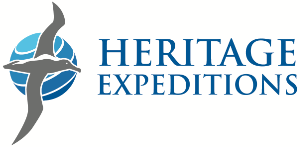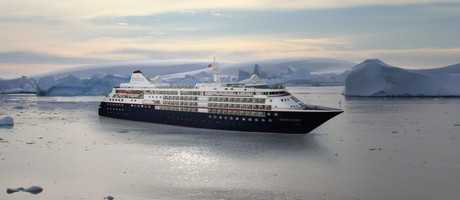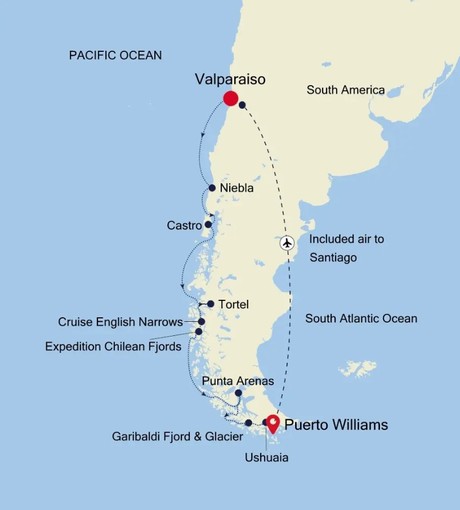Valparaiso to Puerto Williams - 15 Day Patagonia Luxury Cruise
Explore the many faces of the dramatic Chilean coastline. Your first stops will be Niebla and Castro – home to 16 UNESCO World Heritage wooden churches. After a day sightseeing in Tortel we head south into the scenic Chilean fjords for four days of exploration. A day in Punta Arenas allows you to explore beautiful Magdalena Island then it’s back on board for the Garibaldi glacier. Then a final stop in Ushuaia before disembarkation in Puerto Williams.
Highlights
• Niebla, Chile: Explore Niebla, Chile, where you'll have the opportunity to participate in two exciting excursions. Discover the local culture and natural beauty of this coastal destination.
• Tortel, Chile: Enjoy five exciting excursions in Tortel, a picturesque village known for its unique architecture and stunning surroundings. Immerse yourself in the charm of this remote destination.
• Ushuaia, Argentina: Conclude your cruise in Ushuaia, Argentina, with one last excursion opportunity. Ushuaia, often called the "End of the World," is a fascinating city surrounded by breathtaking landscapes.
Since time immemorial Valparaiso has inspired writers, poets, musicians and artists alike. If the city is still a little rough around the edges, this only adds to its bohemian ambience; the architecture, style, street art, nightlife, and live music scenes of Valparaiso are some of the best in the world. Add colourful clifftop homes to the mix and you'll soon see why Valpariaso is many people's favourite Chilean city. The city was founded in 1536 by Spanish conquistador Juan de Saavedra, who named the city after his birthplace. Many of the colonial buildings he implemented are still standing today, despite the rain, wind, fire and several earthquakes (one of which almost levelled the city in 1906). Quirky architecture also abounds; poetry lovers and amateur architects will no doubt want to make the 45 km trip south to Chilean poet laureate (and Nobel Prize winner) Pablo Neruda’s ship-shaped house and museum for a taste of the extraordinary. The city and region are also extremely well known for their love of good food and wine. The vineyards of the nearby Casablanca Valley - first planted in the early 1980s - have earned worldwide recognition in a relatively short space of time. However, Chile’s viticulture history does date back much farther than that. De Saavedra brought grape vines on his voyage to South America in order to make his own wine and this led to a new grape brandy being created, Pisco. Today give any Chilean a Pisco and wherever they are in the world, they will be home.
Days at sea are the perfect opportunity to relax, unwind and catch up with what you’ve been meaning to do. So whether that is going to the gym, visiting the spa, whale watching, catching up on your reading or simply topping up your tan, these blue sea days are the perfect balance to busy days spent exploring shore side.
Niebla is a small seaside resort where the Valdivia River flows into the Corral Bay and the Pacific Ocean, less than 15 kilometers west of Valdivia. Taken normally as a gateway into Valdivia, the small size of the town belies its historical importance. First visited by Spaniards in 1544, the river next to Niebla was named in honor of the conquistador and governor of Chile, Pedro de Valdivia -who would in 1552 found the city which bears his name. Valdivia was the port of entry into Chile after taking the Magellan Strait or rounding Cape Horn and had to be fortified against pirate attacks. The “Castillo de la Pura y Limpia Concepción de Monfort de Lemus” was built into Niebla’s rocky coastline between 1671 and 1679 and was one of the four important Corral Bay fortifications protecting the entrance of the bay and river. Valdivia’s designation as “The Key to the South Pacific” (meaning that he who holds Valdivia controls the navigation of the Pacific) explains why these fortifications, which eventually would number 17, would be so important in the 17th century. When Darwin visited in 1835, he only saw ruins. Niebla’s fort was declared a “Historic Monument” in 1950. Partly restored with Spanish help in 1992 to commemorate the V Centennial, the site was further restored in 2013-14 and now is on the tentative World Heritage list as an exceptional sample of the Hispanic-American school on fortifications and as part of the southernmost such system in America.
The capital of Chile’s Chiloe Island, Castro is big, bright and boisterous. Colourful wooden huts (called palafitos) teeter on stilts over the city’s waterfront, inviting you into a slice of life that’s sure to brighten any day. Warm welcomes abound, music seeps from street corner and life is celebrated with gusto all over the city. If you are looking for a healthy mix of culture and cosmopolitanism, then you have found it in Castro. The island is renowned for its UNESCO World Heritage Site wooden churches. Around 70 churches were built in the 17th and 18th centuries, embodying the intangible richness of the Chiloé Archipelago, and bear witness to a successful fusion of indigenous and European culture. Just 16 of the churches are classified by UNESCO, prime examples of the full integration of the architecture in the landscape and environment, as well as to the spiritual values of the communities. The city is Chile’s third oldest city in existence, founded in 1576. Castro lived peaceably – bar a few attacks from Dutch pirates - until 1837, when it was destroyed by an earthquake, wiping oput most of the population. By 1912 the railway had arrived, allowing the town to develop again. Tragically, the city was once again destroyed in 1960 by a series of earthquakes, tsunamis and fires. History lovers will definitely enjoy The Regional Museum of Castro. Not only does the small museum house an interesting array of Huilliche relics, but a series of photographs depicting Castro pre-1960 is on display.
Days at sea are the perfect opportunity to relax, unwind and catch up with what you’ve been meaning to do. So whether that is going to the gym, visiting the spa, whale watching, catching up on your reading or simply topping up your tan, these blue sea days are the perfect balance to busy days spent exploring shore side.
Tortel is a commune located in Southern Patagonia, a spectacular wilderness region of rugged mountains, glaciers, rivers and forests of infinite beauty. The uneven geography of Tortel shapes a unique landscape, characterized by an archipelagic area with numerous islands and channels. Tortel is known as the “footbridge city” for the unique beauty of its wooden walkways that connect the piers and houses of this quaint place through bridges and stairs, built from cypress wood, that run for four and a half miles around the cove and that respect the rich vegetation that grows under them. Even though it is the sixth largest commune in Chile, it has the lowest population of all with roughly 531 people. The history of the town dates back to 1520 when it was inhabited by nomadic Kawesqar, now extinct. Its definitive foundation was in 1955, after numerous attempts to populate the area. In 2001, it was declared by the Chilean government as a Picturesque Zone of National Heritage.
English Narrows refers to a narrow passage at the southern end of the Messier Channel in Chile’s Region XI, Aysen del General Carlos Ibanez del Campos. The region is Chile’s least populated and a few kilometers south of English Narrows is Puerto Eden, the only settlement along the entire Chilean Inside Passage. With Wellington Island to the west and surrounded by Chile’s largest national park, Bernardo O’Higgins National Park, the narrow passage is at times 180 meters wide, while the entire length is given as 18 kilometers. Low-lying islands and steep mountains are seen on both sides and the Magellanic subpolar forest with its evergreen trees of the genus Nothofagus has taken hold where possible. The strong currents require to pass English Narrows at slack tide and although most of the Messier Channel leading to English Narrows is quite deep, a shipwreck sitting on a bank some 20 kilometers north of the entrance to English Narrows shows why pilots are required by law in Chile. Most people know of the fjords of cold northern hemisphere waters. But the fjords of the far south of Chile are some of the most spectacular in the world. In the past, huge glaciers slowly ground down from the mountains to form steep sided valleys. Sea water has flooded the valleys creating the fjords we can sail along and explore. Smaller glaciers of ice are still here, oozing slowly down from the peaks towards the sea, and carving off ice at their ends. Geology is in your face here, in all its dramatic glory. The cold seas are rich in oxygen and nutrients and there is always a chance of spotting wildlife. South American Fur Seals and South American Sea Lions can be spied in the water or on land. Several dolphin species frequent these waters with Peales Dolphin the most likely to be seen. Humpback Whales are often observed near the fjords. Seabirds are readily visible, especially Brown Hooded and Kelp Gulls, and Chilean Skuas. Imperial and Magellanic Cormorants and Magellanic Penguins have heavy bodies to assist underwater swimming, and usually at first only their heads and necks are seen at the sea surface. The extreme climate, ice and bare rock means wildlife on land must be tough and resourceful. The most magnificent animals are Andean Condors, which soar on wings which have the largest surface area of any bird. Winds and up-drafts push upwards on the wings, giving the birds an up-lifting experience. We get our own up-lifting experience if we see them soaring amongst the mountain peaks.
Welcome to Chile's City at the End of The World – a wind-whipped, fractured land of islands, glacial fjords and mountains, which drop away towards Antarctica. A hardy city, where the temperature hovers in single figures throughout much of the year, Punta Arenas nevertheless offers a warm welcome and refuge, ahead of - and following - epic adventures and expeditions south across the Drake Passage. Captain Scott stopped here in 1904 – testing the postal service sending 400 letters of his successful return - and the city welcomed the rescued Ernest Shackleton and his Endurance crew to these shores in 1916. Punta Arenas is a remote place, but with custom-free status, and more than 120,000 people calling it home it's also surprisingly cosmopolitan. The commercial centre of Magallanes Punta Arenas is fueled by Chilean oil and gas - and establishing itself as a global centre for Antarctic research, with teams from various countries basing themselves here. The town is built around the Plaza de Armas, its central square - be sure to kiss the toe of the Monumento del Indio Patagon statue, said to guarantee you good luck on your return. Look down across this colourful city, stretching out to meet the waters of the Straits of Magellan, from the viewpoint at Cerro De La Cruz. Natural wonders abound in the region, whether it’s Alberto de Agostini National Park’s glacial sculptures, or Torres del Paine National Park’s soaring mountains, rushing waterfalls and picturesque lakes. Offshore, in the Strait of Magellan, you can find the birdlife sanctuary of Magdalena Island - an uninhabited island, where hundreds of thousands of penguins march and crowds of cormorants and gulls call out.
Looming like a colossal river, frozen in the icy hold of time – the first time you set eyes on the Garibaldi Glacier will live with you forever, sending shivers down your spine that are absolutely nothing to do with the fjord weather’s chill. A stunning, unimaginably vast wedge of slowly creeping blue-white ice, the glacier is a fitting climax to the voyage through the cinematic majesty of the Garibaldi Fjord. Sail amid tumbling waterfalls, tightly-packed forestry and soaring mountains as you explore the glacier-sculpted Parque Nacional Alberto de Agostini – the newest member of Chile’s exclusive club of extraordinary, remote National Parks. Spread across the fractured lands of South America’s southern tip, this is the dramatic region where the peaks of the Andes mountain range plunge down into the depths of the icy ocean, generating some of Chile’s most spectacular scenery. You may witness occasional chunks of the ancient ice calving and plunging spectacularly into the waters below, as the glacier continues its gradual retreat. The fresh chunks of ice add to the floating confetti of tiny frozen islands all around you –ranging in hues from creamy whites to electric blues. It may appear like a frigid, unforgiving environment at first glance, but the fjord is alive with unique fauna and flora and recognised by UNESCO as a Biosphere Reserve. Full of diverse ecosystems, you can spot penguins, sea lions and Peruvian condors all adding to the rich tapestry of life here.
A southerly frontier - on the cusp of wild nature and extraordinary adventures - the excitement in Ushuaia is palpable. Prepare for memorable exploits amid the extremes of this southerly location - as you adventure into the colossal scenery of the fractured Tierra del Fuego and beyond. Known as the 'End of the World' Ushuaia looks out across the Beagle Channel, and is surrounded by the Martial Mountains to the north. Despite its remote location, Ushuaia is a surprisingly busy and lively resort, with lots to keep its visitors entertained. For many people, Ushuaia is their last glimpse of anything resembling a city, before they jump off the map into the wilderness, to answer the call of immense national parks or Antarctic expeditions. One of the most dramatic landscapes on the planet - Argentina's land of fire, National Park Tierra del Fuego, is a place of titanic natural forces and limitless beauty. Snow-covered mountains poke the sky, while glaciers spill down between peaks, and gaping fjords open up. With incredible wildlife - from penguins to whales - the park offers some of South America's most amazing hiking opportunities and panoramas. When it comes to food in Ushuaia, locals cook up fierce flavours using the freshest ingredients. King crab is one of the most popular dishes, while sea bass - hauled freshly from the waters - and mounds of meaty mussels - known as cholgas - are also on the menu here.
Puerto Williams is a Chilean city located on Navarino Island on the southern shores of the Beagle Channel. It claims to be the “southernmost city in the world”, however owing to its small size – 2500 residents approximately – the much larger Argentinean city of Ushuaia, which sits on the northern side of the same channel, also claims that title. The surrounding scenery is magnificent. The wild windswept mountains rise above the tree line and are regularly dusted with snow. The city itself has the dramatic backdrop called “Dientes de Navarino” (literally “teeth of Navarino”), which rival the famous Torres del Paine further to the north. The area was originally used by the Yaghan people, hunter-gatherers who despite enduring the harsh regional climate, could not weather the arrival of Europeans. The current city was established as a naval base in 1953 and honours the British-Chilean naval commander John Williams Wilson of the 16th century. Initially it served to protect territorial possessions and fishing rights of the area, as well as offering logistical support to Antarctic bases. More recently it has become a departure point for scientific and tourism trips to the Antarctic region. In contrast to the bustle and traffic of a very commercial Ushuaia, Puerto Williams offers a quieter, more relaxed experience. It charms the visitor with a small village feel, complete with rustic buildings and the homely smell of drifting wood smoke. A haven of peace at the end of the world.
Itineraries are subject to change.
|
Book now |
Vista Suite. From
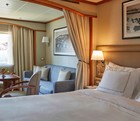
Veranda Suite. From

Deluxe Veranda Suite. From
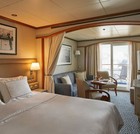
Medallion Suite. From
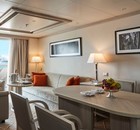
Silver Suite. From
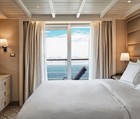
Grand Suite. From

Royal Suite. From
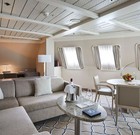
Owner's Suite. From

|
Book now |
Classic Veranda Suite

Superior Veranda Suite

Deluxe Veranda Suite

Premium Veranda Suite

Silver Suite

Grand Suite

Owner's Suite

14 Day Cruise
Vessel Type: Luxury Expedition
Length: 157 m
Passenger Capacity: 200/260
Built: 1994 Refurbished & Rebranded: 2017
After extensive refurbishment, Silver Cloud will be the most spacious and comfortable ice class vessel in expedition cruising. Her large suites, her destination itineraries and her unparalleled service make her truly special. Her five dining options will tantalise your taste buds and as 80% of her suites include a veranda, watching a breaching whale or a few cavorting penguins has never been so personal. Broad sweeping decks with multiple open spaces and a swimming pool complete what is surely the most distinctive expedition ship sailing today.
A limited number of guests, particularly with just 200 in polar waters, mean that Silver Cloud has the highest space to guest and crew to guest ratios in expedition cruising. With her 18 zodiacs, possibilities are almost limitless with ship-wide simultaneous explorations. Finally, a team of 19 passionate and dedicated experts are always at hand to ensure your voyage is enhanced every step of the way.
DECK 09 - Observation Lounge, Jogging Track
DECK 08 - Pool, Pool Bar, Hot Rocks, The Panorama Lounge, The Connoisseur’s Corner
DECK 07 - La Terrazza, The Spa at Silversea, Beauty Salon, The Library
DECK 06 - Lecture Theatre, The Fitness Centre, Reception/Guest Relations, Expedition Desk
DECK 05 - The Bar, Boutique, Casino
DECK 04 - Main Restaurant, Le Champagne, Launderette

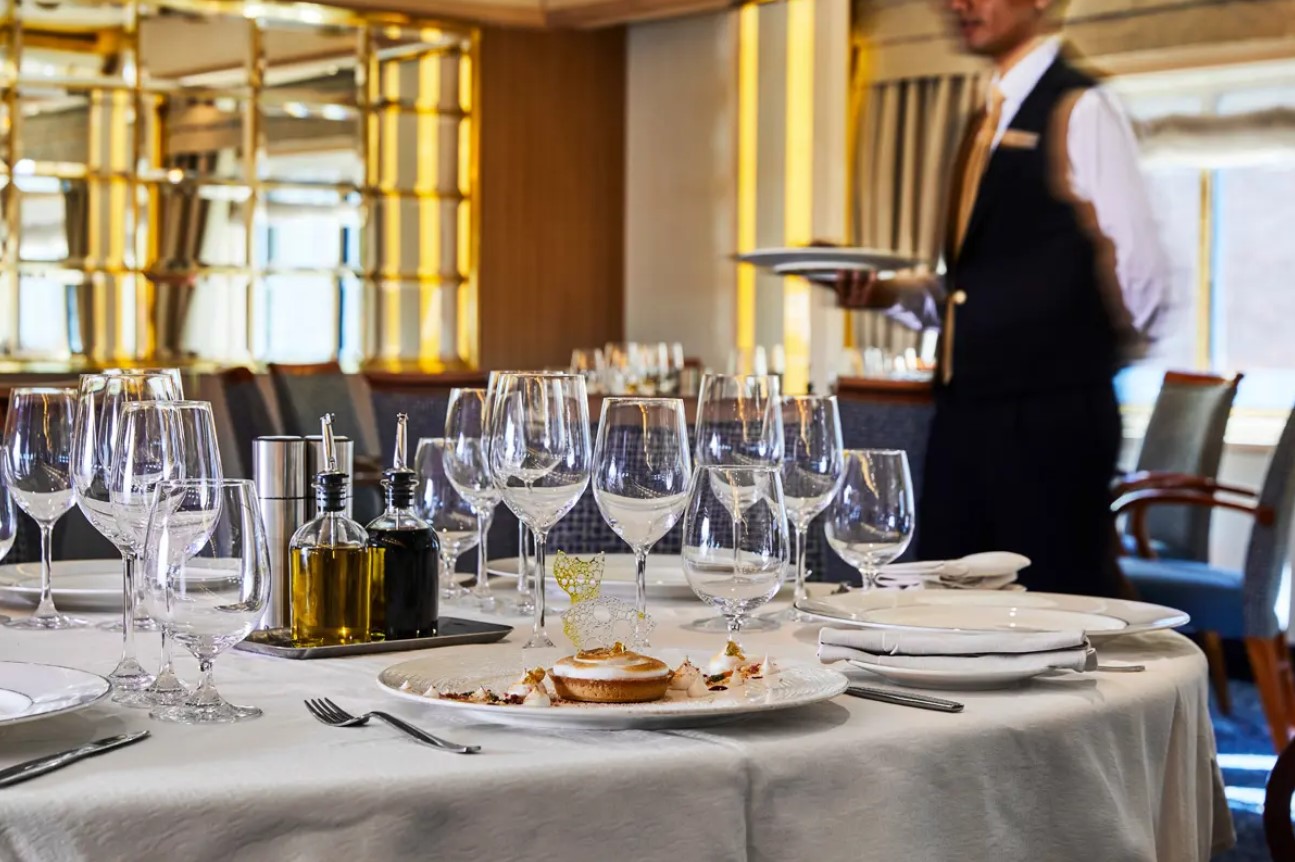





Vessel Type: Luxury Expedition
Length: 164.40 metres
Passenger Capacity: 200
Built: 2021
Designed for polar exploration, Silver Endeavour breaks the ice of luxury expedition travel.
We’re proud to announce that our newest addition has joined the fleet. Built to PC6 Polar Class specifications – one of the highest Polar Class classifications there is – Silver Endeavour revolutionises our expedition voyages, and allows us to travel deeper to some of the planet’s farthest flung coasts. Her statistics speak for themselves: from unrivalled, industry-leading crew-to-guest, zodiac-to-guest and expert-to-guest ratios, to cutting-edge navigation and exploration technology and hallmark Silversea comfort make her the most luxurious expedition ship ever built.
Spread over eight public decks, not only does she feature ample onboard space, multiple restaurants, plus a huge choice of bars and lounges, but her large and luxurious suites are some of the best in expedition cruising. Superbly designed, all her suites feature a balcony and our highest standards of service thanks to an impressive crew-to-guest ratio of 1:1.
Mud Room
Silver Endeavour’s Mud Room is the perfect place to prepare for all your expedition activities. Spaciously designed, the two mud rooms are superbly modern, and equipped with state-of-the-art equipment.
Explorer Lounge
Strategically located mid-ship on deck 4, the Explorer Lounge is the operational heart of shore excursions while onboard. This is where you’ll attend your daily recap and briefing sessions or attend lectures.
Connoisseur’s Corner
The Connoisseur’s Corner is an indulgent and sophisticated cigar lounge, where you can enjoy an after dinner drink in a cosy private club atmosphere.
Otium Spa
Otium is where you can relax and unwind, but also where you can enjoy world class treatments that make sure you look as good as you feel and that even Venus herself would envy.
Observation Lounge
The Observation Lounge offers one of our favourite vantage points of Silver Endeavour. Plus 270-degree surrounding glass windows make this immersive venue ideal whatever time of the day.
Beauty Salon
Our committed and competent team of beauty therapists is here to help keep your hair, nails, skin, and body healthy and happy.
Fitness Centre
Whether you are a serious keep fit fanatic or casual athlete, you’ll find what you’re looking for in Silver Endeavour’s Fitness Centre. Expertly designed classes and personal training sessions make sure that you keep in shape.
Boutique
Located mid-ship on Deck 5, the Boutique aboard Silver Endeavour means luxury shopping experiences do not end just because you’re at sea! Carefully selected partners offer a wide selection of the latest fashions.
Pool Deck
Surrounded by glazing extended all the way to the top of the venue, the Pool Deck gives you the feeling of always being connected to the sea. The glass-enclosed pool deck is the ideal place to enjoy breathtaking views.
Library
Whether you’re an avid bibliophile or simply prefer a quiet place while at sea, it’s hard not to fall in love with Silver Endeavour’s onboard library, with its beautiful reference books, comfortable chairs and stunning scenery.



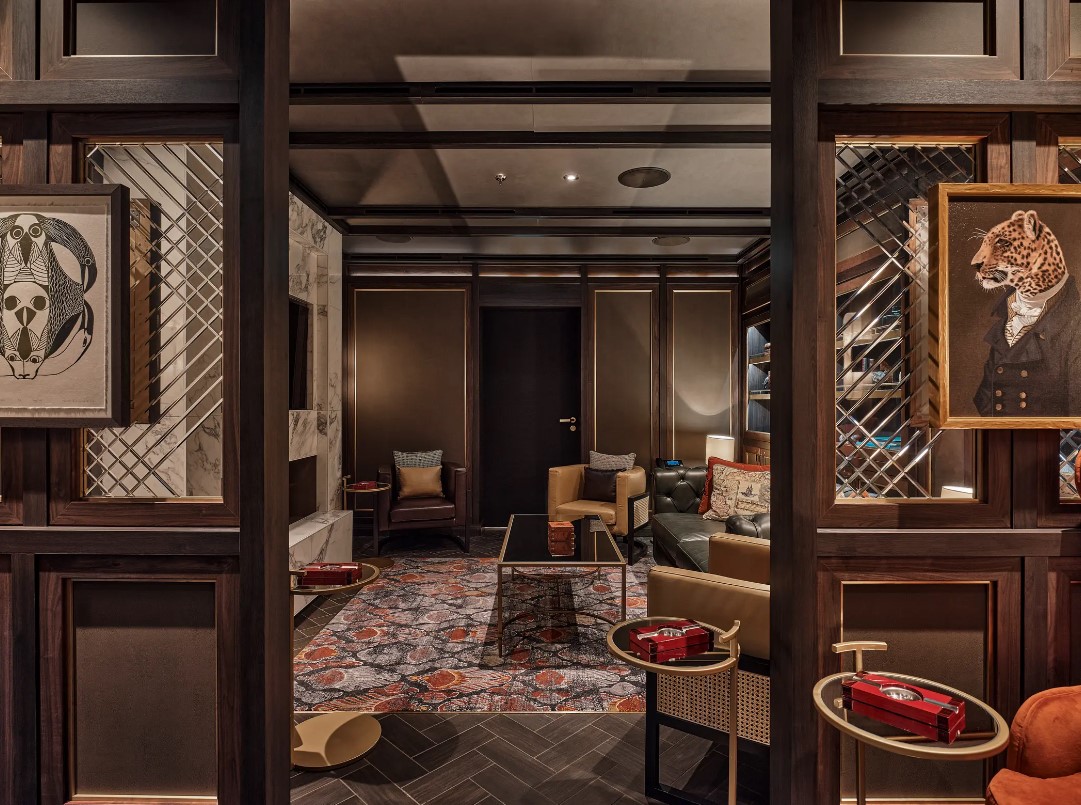



Optional tours and excursions available. Please contact us for more details.
Inclusions
• Voyage on board in selected cabin category
• Butler service in every suite
• All meals on board*
• Beverages on board (Select wines, spirits and non-alcoholic beverages)
• Crew Gratuities (Excluding Spa & salon staff)
• Expedition excursions
• Lectures and entertainment on board
• Free wif-fi (Subject to coverage)
• Laundry service included for certain fare categories
• Self service laundry facilities available
• In country flights where required by the itinerary
*Some onboard restaurants incur an additional cost
• CHARTER/GROUP FLIGHTS
• HOTEL
• AIRPORT TRANSFERS
• INTERNATIONAL FLIGHTS - ECONOMY CLASS or Business Class upgrade at reduced rates
• PRIVATE EXECUTIVE TRANSFERS
Exclusions
• International flights unless otherwise stated
• Passport and visa costs if applicable
• Travel insurance
• Optional shore excursions
• Spa and Salon Treatments
• Complete valet services, including laundry, pressing and dry cleaning, are available at an additional charge
Our Associates Include

